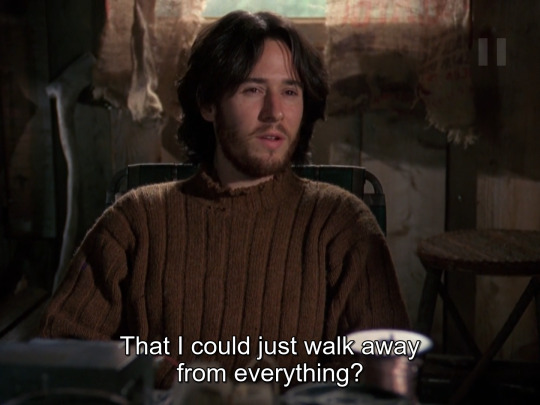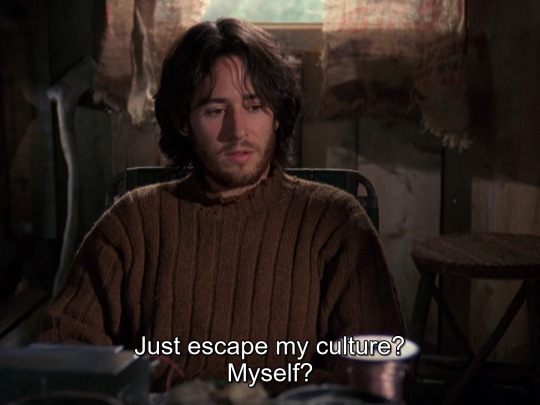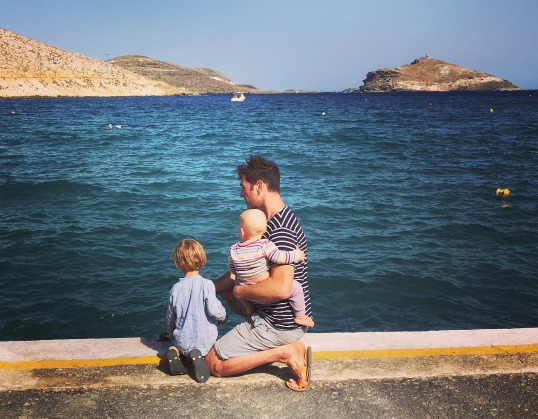#thoreauvian stuff
Explore tagged Tumblr posts
Text



#northern exposure#love this series#thoreauvian stuff#walden#kindof#fav tv show spam#joshua brand#john falsey#rob morrow
30 notes
·
View notes
Photo

New Post has been published on https://fitnesshealthyoga.com/reflections-on-michael-stone-mental-health-and-yogas-cult-of-positivity/
Reflections On Michael Stone, Mental Health And Yoga’s Cult Of Positivity
by Rachel Meyer
It’s over a month now that Michael Stone is gone.
What a strange word that is: gone.
Gone, Gone, Gone beyond Gone utterly beyond
Like many of us, I can’t quite believe it.
Michael’s face keeps popping up on my Facebook feed, and for a split-second my mind thinks it’s a new blog or an unheard podcast or an upcoming retreat, for the briefest moment excited to see what wisdom offering might be around the corner.
And then I remember he is gate gate paragate parasamgate bodhi svaha
Gone from suffering into the liberation from suffering.
*
Memorials have been appearing regularly; graceful, all.
Michael’s brother Jayme’s hauntingly-perfect eulogy about the wide wake that Michael leaves. The heartbreakingly-real, yet unbelievably-grounded regular FB updates from Carina and team. Compassionate tributes from Spirituality and Health and Tricycle and Lion’s Roar, the Buddhist community coming together in their collective grief. Matthew Remski reading Michael’s letters about how family wakes us up. Mainstream media coverage in The Washington Post and The Globe and Mail, complicated pieces often written from a secular perspective that throw around thorny phrases like “charismatic guru” and “opioid overdose.”
In the wake of Michael’s unexpected death, the overarching themes from conversations amongst my yoga teacher colleagues have been:
1) ohmigod this is so f*cking sad, and
2) we have GOT to talk more transparently about mental health in the yoga and wellness communities.
Yoga teachers: how has this tragedy touched your hearts and minds?
And where do we go from here?
*
It is 2008.
Michael’s first book, The Inner Tradition Of Yoga, has just been published. There’s not much else out there like it.
I stumble across a copy in the philosophy section of an honest-to-god real-life Barnes & Noble, back when there was such a thing in San Francisco’s Union Square. I read half of it immediately, inspired, sitting there on the floor in a caffeinated half-lotus.
The next day, ensconced in a cafe on Polk Street, the guy to my left taps my shoulder, leans over, gestures at the cover, and asks incredulously, “The inner tradition of yoga?!? Is there even such a thing??”
Michael Stone was unlike any other.
He set a remarkable standard.
Since that moment nearly a decade ago, he has been my touchstone for what it means to be a thoughtful, humble, wise student, teacher, writer, meditator, activist, and yoga philosopher.
Here was someone who’d studied with Richard Freeman and was a legit Ashtangi, an intellectual who’d lived a Thoreauvian life in a bus in the wilderness, an activist who applied yogic ethics to the Occupy movement and called for engaged Buddhism with an eye toward social justice. Here was a teacher who melded psychology and yoga philosophy and Buddhism in the most-approachable of ways. Here was a globally respected scholar-yogi who didn’t sell out to multinational corporations by becoming an ambassador for yoga pants. Here was a young husband and father who was at once engaged in family life and grounded in the monastic/ascetic model, a seeker who’d trained with the greats and was honing his own voice at the same time.
Michael’s work gave me permission to be a yoga teacher who was not always perky and chirpy and full of woo-woo bliss-talk. He made it seem possible to be at once serious and funny and engaged and introspective, as opposed to a run-of-the-mill yoga fitness Barbie.
As a student and as a teacher, his work encouraged me to feel all of my human feelings. To aspire to balance rather than bliss. To aim for sattva instead of sparkling.
That he struggled shouldn’t come to any of us as a shock.
That we all struggle shouldn’t come to any of us as a shock.
*
I understand Michael’s fear about being forthcoming about his mental health.
In April 2016, I wrote an article for The Washington Post about my own struggle with postpartum depression.. The piece had been on my heart for two years, and it hungered desperately to be articulated, like nothing else I’d ever written before. The final essay took months to come together, and I was pleased with the final result.
It felt true, unvarnished, melancholy, whole.
But in the days before it was published, I was terrified. Wracked with anxiety. The morning before it came out, I sat on the floor of my office, shaking, and wept. It felt like the ultimate coming out of the closet. Total naked vulnerability.
Because “speaking [my] desolation was terrifying. I was a yoga teacher. I was supposed to weather the storms of parenthood with grace: be positive and perky, measured and resilient, lose the baby weight in a flash, thrive on green juice and quinoa whilst wearing my baby like a kangaroo.”
Wasn’t I? Isn’t that the shakti cheerleader myth we’ve collectively constructed, Instagram post by Instagram post?
After the piece was published, I was overwhelmed by an outpouring of solidarity from across the globe, women yogis reaching out to say, “You spoke my truth. I see myself in your words, and I didn’t have the words to articulate this experience myself. Thank you.”
(It’s always the pieces that are most terrifying to publish that strike a chord, that people relate to most. The whole experience was such a good reminder to trust the vulnerability at the heart of intimacy.)
A few days later, I reached out to Michael and shared my essay with him, mentioning that I’d long respected his work and imagined he might find it of value, or at least relatable.
The next morning I awoke to his reply. Michael wrote, “This is the most tender, accurate, & clear article I’ve read in months. Perfectly sad and inspiring.”
It was, and always will be, one of the highlights of my career.
Michael and I never met in person. But I’ve spent hundreds of hours “with” him and his teachings over the years, listening to his measured voice while hiking the trails of Northern California, driving the twisting roads of Marin en route to teach in Oakland, sitting on buses in San Francisco sending metta to the strangers across from me, practicing silently on my kitchen floor in Portland while my son slept upstairs, meditating on a plane flying cross-country to begin a new life in Boston.
I know I am not alone. These years, these hours, listening, all, have been a lesson in the impact one person can have on another (thousands of others), quietly, across the miles.
I am forever grateful.
*
In the inimitable void that Michael has left, I am heartened to see that his teaching team is still moving forward with upcoming trainings, such that his teaching might continue, even in his physical absence.
Among so many lessons over the years, these stand out:
Enlightenment is intimacy. And family wakes us up. Michael described enlightenment as intimacy. A closeness with what is. A clear-seeing; a deep-knowing.
I keep thinking of Carina, their children, their unborn baby. I keep thinking of how unbearable the grief of loss must be, the heart-shattering miracle that will be that forthcoming child. I keep thinking of the fact that we just never f*cking know when our day will come.
All of spiritual practice is just taking care of things. Years ago, I scrawled this podcast nugget down on a piece of scrap paper and taped it to the wall. My husband found it in a moving box in the basement a few days after Michael passed. It still feels true.
Yoga is about learning to be awake in the world. Michael’s book of the same name, his podcast, too, emphasized as much, at once poetry and prose and philosophy and meditation. Very much like Virginia Woolf’s, his writing was at once literary and philosophical and grounded in the stuff of real life.
Your life doesn’t need you to think about it all the time. Perfectly simple. Perfectly wise.
Yoga is about learning to be real. Yoga means dropping our masks, releasing the armor. Finding ease in your being, your body and mind. We are allowed to feel the full depth of the human emotional spectrum without invalidating or doing violence to our psyches by denying the more shadowy of those emotions. This means learning to be with all that we feel—even the most irritable, politically incorrect, difficult, complicated emotions—and trusting that, with the help of the breath, we can stay with them, and watch them “arise, unfold, and pass away,” all the while residing in that place of equilibrium. This is the true work of the yogi.
*
Teachers, where do we go from here?
What does a new paradigm look like? And how can we help colleagues who are struggling?
Here’s what I’ve got so far:
1. We can’t put one another on pedestals. ‘Nuff said. Matthew Gindin’s reflection on “Putting To Rest The Myth of The Heroic Self” over at Tricycle addresses this well.
2. We need to be more transparent about our own humanity, and bold enough to acknowledge more than bliss. We have to be authentic about the fact that, yes, absolutely, we’re human, and we experience the whole realm of human emotions. We can’t prioritize bliss over the other aspects of being human, fetishizing a certain saccharine happiness myth that looks like glittery leggings and handstands on the beach. We need to TALK about this stuff, to step into the world with our own armor removed. Nobody wants a teacher who’s all cotton candy, shooting unicorn rainbows out the butt.
3. That said, we need to teach from our scars, not from our open wounds. As an eating disorder survivor, as a postpartum depression survivor, as a woman, as a mother, as a partner, I can serve folks who suffer and struggle with similar life circumstances by saying, “Ok, I’m not perfect, but here are some tools yoga and meditation have taught me that helped me, and maybe they’ll help you, too.”
Our job is to help one another feel better in body and mind, right? To use what we’ve learned and practiced to offer a measure of ease, freedom from bodily suffering, freedom from mental suffering.
So maybe on our bios where we mention how delighted we are to have studied with Rockstar Teacher A and Rockstar Guru B, we can also mention the ways in which we’ve been broken-open and the communities we’ve learned to serve as a result. This recent piece from Josh Korda articulates this idea nicely.
4. We need to be vigilantly self-aware of our own spiritual bypassing. If you don’t know yet what that is, I highly recommend you dig into Buddhist psychologist John Welwood’s work. “Spiritual bypassing” occurs when we use spiritual beliefs and practices to avoid dealing with painful or uncomfortable feelings, wounds, or issues. Lots of this happening in and around yogi social media, amirite?
5. We need to release shame and be bold enough to be vulnerable. Most of us know too well the dangers of constructing a shiny facade. Vulnerability leads to compassion leads to intimacy. Check out Brené Brown on both of these themes if you haven’t done so already.
6. We need to redefine happiness as profound okayness. Tara Brach (another wise and wonderful Buddhist teacher with a psychological bent) offers this grounding definition, and I can’t love it enough. Happiness as profound okayness is key to re-conceiving a yogic approach that’s more than perpetual euphoria (which is not sustainable, nor realistic, for anyone familiar with the First Noble Truth. Life is suffering, bro. Ask the Buddha, he’ll fill you in).
7. We can’t be afraid to get help when we need it. I can never pretend to understand what it’s like to cycle between the manic/depressive episodes of a bipolar diagnosis. We all struggle in our own ways, and are healed or given solace in our own ways.
As Julie Peters’s excellent recent essay argues, “yoga, self-care, and alternative forms of medicine cannot fix everything.” So you do you. Whatever that takes to bring you to thriving. Including meds. Including acupuncture. Including ayurvedic medicine, etc. etc. It’s all gravy.
8. We’ve gotta be humble and authentic—brave enough to stop selling a pretty image. The contemporary yoga scene is dominated by commodification. Most of us teachers are painfully aware of how social media has turned yoga practice into a performative popularity contest, rather than a meditative spiritual discipline and path to freedom from suffering. So what can we do to be more authentic as teachers, to relax into the wabi-sabi qualities of being without spewing our guts like a hot mess? Where’s the balance?
9. Finally, we need to talk more openly about death. Because, as I wrote last year in Yoga International, “death is as real and as sacred and as holy as life. Because suffering and sorrow are the necessary counterparts to contentment and joy. And because I’m willing to bet that some kind of suffering (what Buddhists call dukkha) brought most of us to yoga in the first place—whether it was pain in our knees, or aches in our hearts.”
*
“When we inspect our everyday experience in detail, we see that death and birth occur one after the other in every successive moment. What we see in one breath cycle we see everywhere.” — MS
My three-year-old son and I made a pilgrimage of sorts to Walden Pond the other day. I showed him the statue of the man who had been Henry David Thoreau, and told him he is dead now. He got sad and serious, and said, “Mama, but will he come back? I don’t want him to be dead.” We sat down on a bench and talked about spirit, and divinity, and perpetuity, and what it means to leave the body. It was the first time he’s ever wondered, or asked.
“How do we go to be with God? What about you and me and daddy? How do our bodies know to breathe? We are still alive, right?”
Later, as I buckled him into his carseat, after we’d swum and fished for tadpoles and hiked to the original site of Thoreau’s cabin, he looked up at me and asked, “Well, what about Ben (his friend from preschool)? Will he die, too?”
Gone, gone, gone beyond.
I thought of Michael often that day at Walden Pond. He had spoken in interviews of his own Thoreauvian experiment, living in a VW bus in the woods in his early 20s. This was one of the things I’d most appreciated about him, that duality of being at once an ascetic, a monastic, and a householder finding awakening in his relationships.
Michael, thank you. Thank you for all your service, your heart, your ethics, the way you worked to transform your own suffering into teachings that might be of so much solace and inspiration to so many. I imagine you had no idea what great impact your teachings have had throughout the world.
And to Michael’s family: our collective hearts have broken over and over in imagining your suffering in the wake of his unexpected loss. To you, Carina, to Michael’s children and to your unborn child, we offer tenderness and peace and strength.
Inhale, begin the vinyasa.
Exhale, sit with the emptiness at the end of the exhalation.
May you rest in the peace that passes all understanding.
* * *
Let’s co-create a list of mental health resources for yoga teachers. You can post them here in the comments or email me at [email protected] and we will compile them and share them here.
Here’s a start:
If you are so inclined, the link to donate to Michael’s family is here.
Tara Brach: Meditation, Psychologist, Author, Teacher
Yogaland Podcast: A true story of overcoming depression, panic & shame
Stephanie Snyder’s TED talk: Learning to Live
On the passing of Michael Stone and mental health in the yoga community (Spirituality & Health)
Why I come clean to my students about my insomnia, anxiety, and sobriety (Tricycle)
A Zen yoga teacher gets real about postpartum depression (Washington Post)
~
Rachel Meyer is a Boston-based writer and yoga teacher. Her work has appeared in The Washington Post, On Being, Yoga Journal, Tricycle, Yoga International, HuffPost, and more. You can find her at www.rachelmeyeryoga.com or @rachelmeyeryoga.
Image credit (1): Michael Stone Instagram, (2): via MelissaWest.com
Source link
0 notes